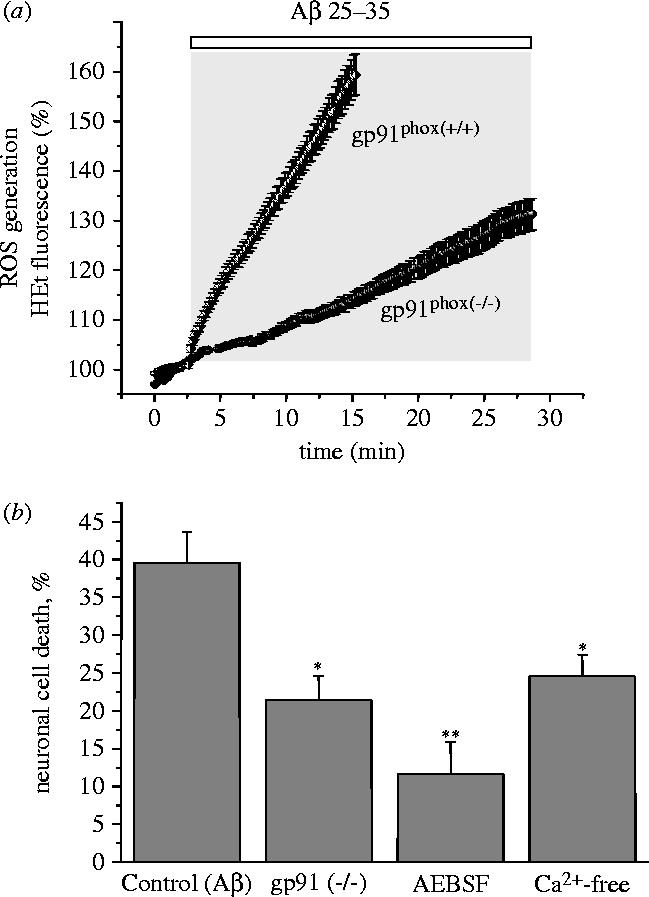Figure 4.

Aβ induced generation of oxygen free radicals and cell death are largely attributable to NADPH oxidase. (a) The rate of ROS generation was measured using hydroethidine (HEt), which is oxidized to a fluorescent product by ROS. The rate of appearance of the fluorescent product was clearly increased in mouse astrocytes exposed to Aβ 1–42 (2.5 μM; n=59) which caused a 3.6 fold increase in the rate of rise of the HEt signal (from 1.1±0.12 to 3.98±0.21 arb. fluorescence U min−1; n=179 cells), in cortical astrocytes of both rats and mice. In astrocytes cultured from gp91phox knockout transgenic mice, no significant increase in ROS generation was detectable (n=116). (b) Neuronal death of cells from gp91phox knockout mice following 24 h exposure to Aβ was significantly reduced from control (39.6±4.1%) to 21.4±3.2% (*p<0.05). The inhibitor of NADPH oxidase AEBSF and removal of external Ca2+ both also reduced neuronal cell death in mouse cultures, (cell death was reduced from 39.6±4.1% in control to 11.6±4.3% (AEBSF, **p<0.001) and to 24.6±2.8% (Ca2+-free, *p<0.05).
